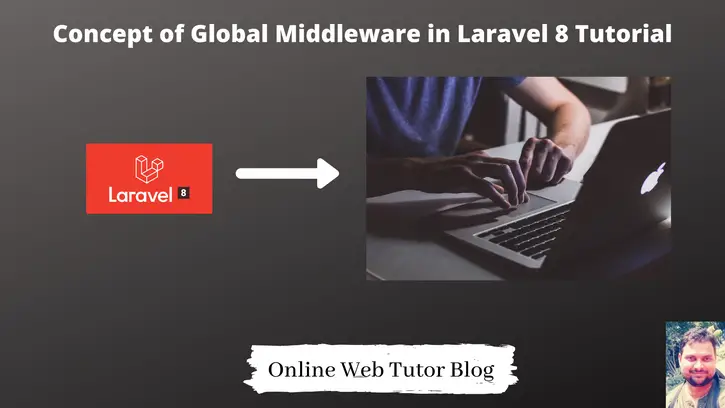Middleware are just like the filter funnel which filters the HTTP request inside any application. Any request before enter into application must needs to pass through the barrier of middleware which application contains.
Middlewares basically used to filter the authenticated request in application. By the help of which we can detect which route is valid or invalid. Apart from this, we have several other examples.
In laravel we have three types of middlewares –
- Global Middleware
- Group Middleware
- Route Middleware
Inside this article, we will see the concept of Global Middleware in Laravel 8.
Let’s get started.
What is Global Middleware?
Global middleware name itself clears that, the middleware which will be applied globally to entire application. All the request inside application must be needs to go with filter funnel i.e middleware and then process next.
By the help of php artisan command, we create Middleware in laravel.
$ php artisan make:middleware <MiddlewareName>
Middlewares will be stored inside /app/Http/Middleware. To register middleware inside application, Kernel.php file will be used which is inside /app/Http. Kernel.php, it’s a class file which contains registration of middlewares.
Laravel Installation
We will create laravel project using composer. So, please make sure your system should have composer installed. If not, may be this article will help you to Install composer in system.
Here is the command to create a laravel project-
composer create-project --prefer-dist laravel/laravel blog
To start the development server of Laravel –
php artisan serve
URL: http://127.0.0.1:8000
Assuming laravel already installed inside your system.
Example – Global Middleware Implementation
Let’s take an example to understand the concept of global middleware inside laravel application.
- Create a Middleware which checks country, when we open URL.
- US, IN, AFG should be allowed inside application, they can access application routes.
- UK, AUS should be restricted to use or access route.
Create a Middleware
Open project into terminal and run this artisan command.
$ php artisan make:middleware CountryCheck
It will create a file with name CountryCheck.php at /app/Http/Middleware folder.
Open CountryCheck.php file and write this following code into it.
<?php
namespace App\Http\Middleware;
use Closure;
use Illuminate\Http\Request;
class CountryCheck
{
/**
* Handle an incoming request.
*
* @param \Illuminate\Http\Request $request
* @param \Closure $next
* @return mixed
*/
public function handle(Request $request, Closure $next)
{
if ($request->country && !in_array($request->country, array("us", "in", "afg"))) {
return redirect("noaccess");
}
return $next($request);
}
}- $request->country is NOT (US, IN, AFG), it will open no access page.
Register Middleware in Application
Open Kernel.php from /app/Http. Search for $middleware and add this.
protected $middleware = [ ... \App\Http\Middleware\CountryCheck::class, ... ];
Create NoAccess Route
Open web.php from /routes and write this route into it.
Route::view("noaccess", "noaccess");
Next, we need to create noaccess.blade.php file.
Create NoAccess Page
Create a file called noaccess.blade.php at /resources/views folder. Open write this simple code into it.
<h3>Sorry! You have no access to open this page.</h3>
Application Testing
Run this command into project terminal to start development server,
php artisan serveURL – http://127.0.0.1:8000/?country=us
We can access the routes.
URL – http://127.0.0.1:8000/?country=uk
Output:
Sorry! You have no access to open this page.
We hope this article helped you to learn about Concept of Global Middleware in Laravel 8 Tutorial in a very detailed way.
If you liked this article, then please subscribe to our YouTube Channel for PHP & it’s framework, WordPress, Node Js video tutorials. You can also find us on Twitter and Facebook.
